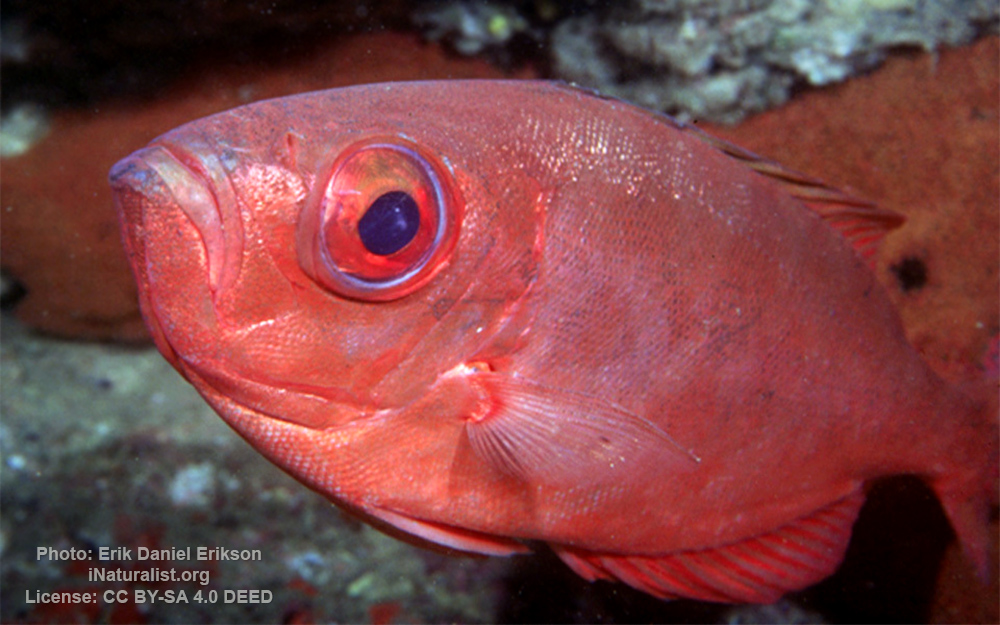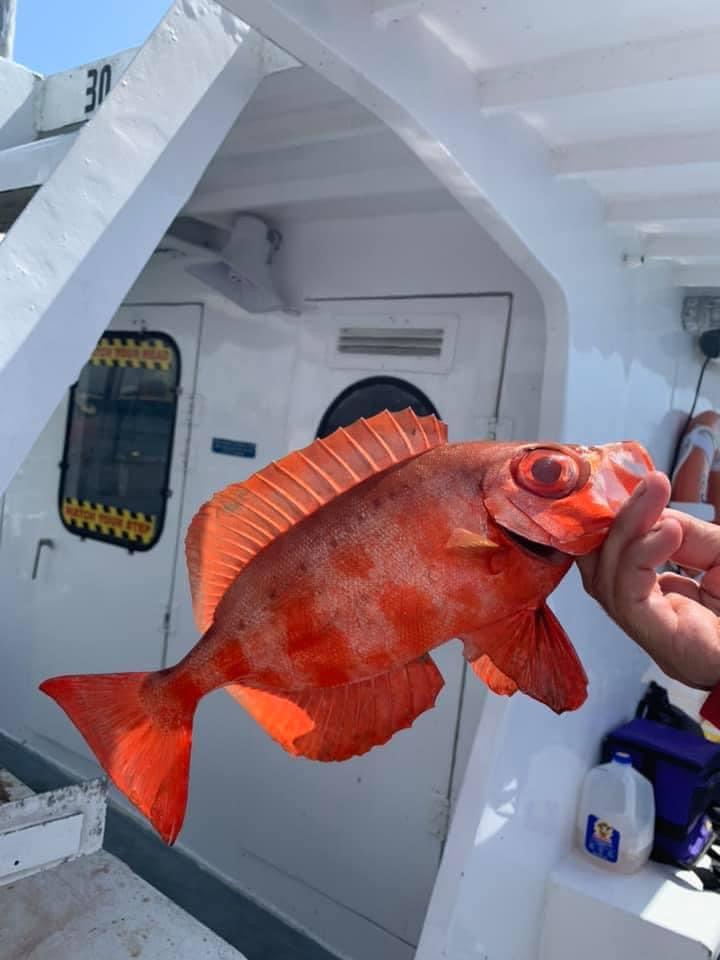Atlantic bigeye
(Priacanthus arenatus)

Image source: Erik Daniel Erikson | inaturalist.org
Classification
General data
The Atlantic bigeye is a small to medium sized perciform fish. Almost all parts of the fish are entirely reddish-orange, including the eyes. The dorsal fin has 10 spines, and 14 rays. The anal fin has 3 spines and 15 rays. The eyes of the Atlantic bigeye are large, due to being primarily nocturnal feeders. Atlantic bigeye form small aggregations near the bottom of the ocean at night.
Max length: 50 cm TL; common length: 35 cm TL
Max. published weight: 2.9 kg
Atlantic bigeye are widely distributed across both the Northern and Southern Atlantic Ocean. It is widely distributed throughout the subtropical and tropical regions of the Atlantic.
In the Western Atlantic, the Atlantic bigeye is distributed from the Northeastern United States to Northern Argentina. Juvenile fish in the Western Atlantic occasionally stray as far North as Nova Scotia in Canada due to the Gulf Stream, though these fish do not stay for long in the area as the Atlantic bigeye cannot survive cold water temperatures.
In the Eastern Atlantic, they are found from West Morocco to Northern Angola.
A single individual was reported in the Mediterranean Sea off Sardinia, Italy, in 1979.
They are found at several levels of the water column, from 10 m to over 250 m, though they most commonly occur between 30 m and 50 m. Juveniles tend to be pelagic in the upper levels of the water column.












